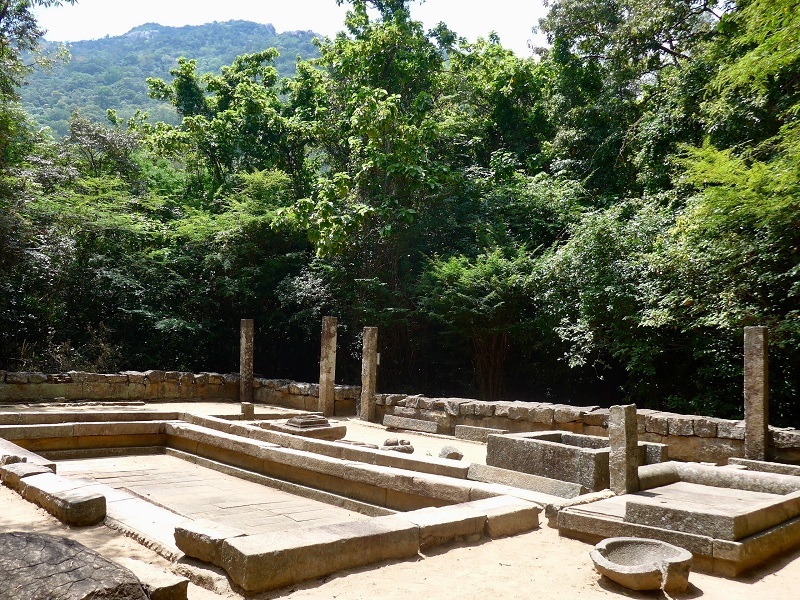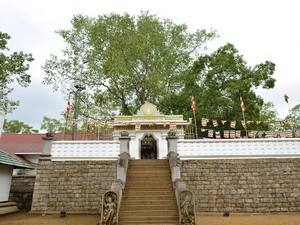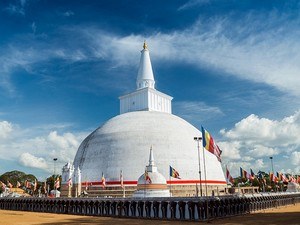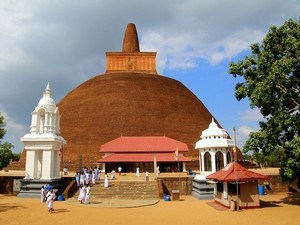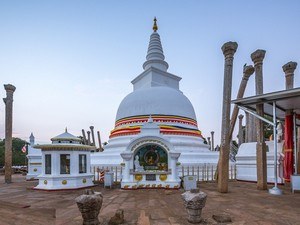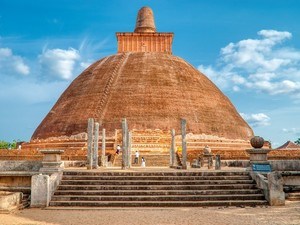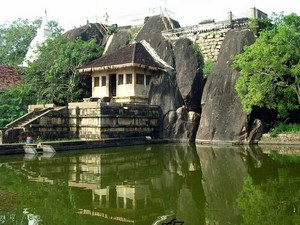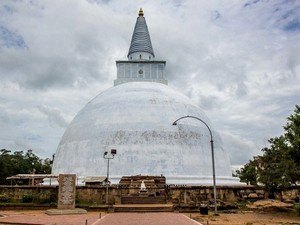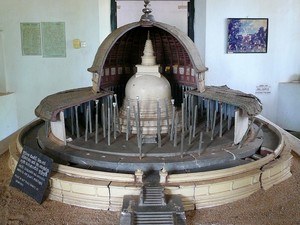Ritigala Forest Ruins, Anuradhapura - Timings, History, Architecture, Best Time to Visit
 #11 of 15 Places to Visit in Anuradhapura
#11 of 15 Places to Visit in Anuradhapura
 Distance (From Anuradhapura): 56 Kms
Distance (From Anuradhapura): 56 Kms
 Trip Duration (Including Travel): 4 Hours/Half Day
Trip Duration (Including Travel): 4 Hours/Half Day
 Place Location: In Ritigala Strict Nature Reserve
Place Location: In Ritigala Strict Nature Reserve
 Transportation Options: + Walk/Trek
Transportation Options: + Walk/Trek
 Travel Tips: None
Travel Tips: None
At a distance of 21 km from Habarana, 32 km from Sigiriya and 56 km from Anuradhapura, Ritigala is an ancient Buddhist monastery and mountain situated in Ritigala Strict Nature Reserve of Sri Lanka. It is one of the popular heritage places to visit in Anuradha as part of the Sri Lanka Tour.
At a height of 766 m above sea level, Ritigala is the highest mountain in the north-central dry plains of Sri Lanka. The mountain mass about three miles long and about two miles wide at its widest point is covered with dense jungle inhabited by wild elephants, leopards, and bears. It is the watershed of the Malwatu Oya which feeds the Nachaduwa tank and Kalueba Ela which feeds Huruluwewa. The Ritigala Mountain has been declared a Strict Natural Reserve in order to maintain its pristine environment.
Ritigala is home to 70 rock caves that were believed to had been inhabited since the first century BC. Mahavamsa, the great historical chronicle of Sri Lanka narrates that Ritigala was known by the name of 'aritta-pabbata' during the reign of Pandukabhaya (377-307 BC). With the exception of a few broken granite Buddha statues in a number of caves, Ritigala has none of the traditional icons of Buddhist temples- no bo tree, no stupas. The first Lanka Vihare was founded near Ritigala at the foot of the mountain in the second century BC. The Aritta Vihare was founded a century afterward. In the ninth century AD, King Sena made an endowment of the monastery, a larger complex higher up the slope for a group of Buddhist ascetics called the Pansukulikas (rag robes) monks who practiced extreme austerity. By the 10th-12th century AD, however, Ritigala seems to have been abandoned by the hermit monks, taken over by the jungle and forgotten by the populace until it was rediscovered in the late 19th century by James Mantell.
Ruins of the monastery are located at the foot of the eastern side of the Ritigala mountain range. The Archaeological Department has sensitively restored many of the ruins. The monastery precinct begins at the office of the on-site branch of the Department of Archeology of Sri Lanka close to the foot of the reservoir named Banda Pokuna. The ancient man-made reservoir is an impressive feat of engineering with a bund completing a circumference of 366 meters. The construction of the reservoir is credited to King Pandukabhaya (437 -367 BC). The reservoir possibly served a ritual bathing purpose, with visitors bathing herein before entering the monastery. The top of the bund is paved with large stones.
The path to the ruins runs along the southern bank of the reservoir leads to the first building. A short climb off the foot of the mountain through a stone path takes the visitors to the ruins at Ritigala that are scattered over an area of about 120 acres. Here one can see the refectory, a large rectangular building with a sunken and paved courtyard in its center with pillars around it. Further up the flagstone staircase is the main roundabout, with two paths to the left. The first leads back past half-hidden ruins to a monolithic bridge and raised library. There are several other buildings here to explore. Further up the main staircase you finally get to Building No 16, a padhanaghara (double-plat formed building) set in a moat-like depression, used for meditation, teaching, and ceremony. Look for the ornate latrine stone in the right corner.
The entire trek takes about 1.5 hours from the entry point. The trek is moderate but there are some steep steps. Visitors have to pay a nominal entrance fee to get in, and the guard at the entryway will tell you to follow the path and not venture into the forest as the rest of it is off-limits. Visitors can hire a guide at the reserve's visitor center.
Timings: 8 AM - 5 PM
Entry: LKR. 20 for Locals & LKR. 500 for Foreigners



